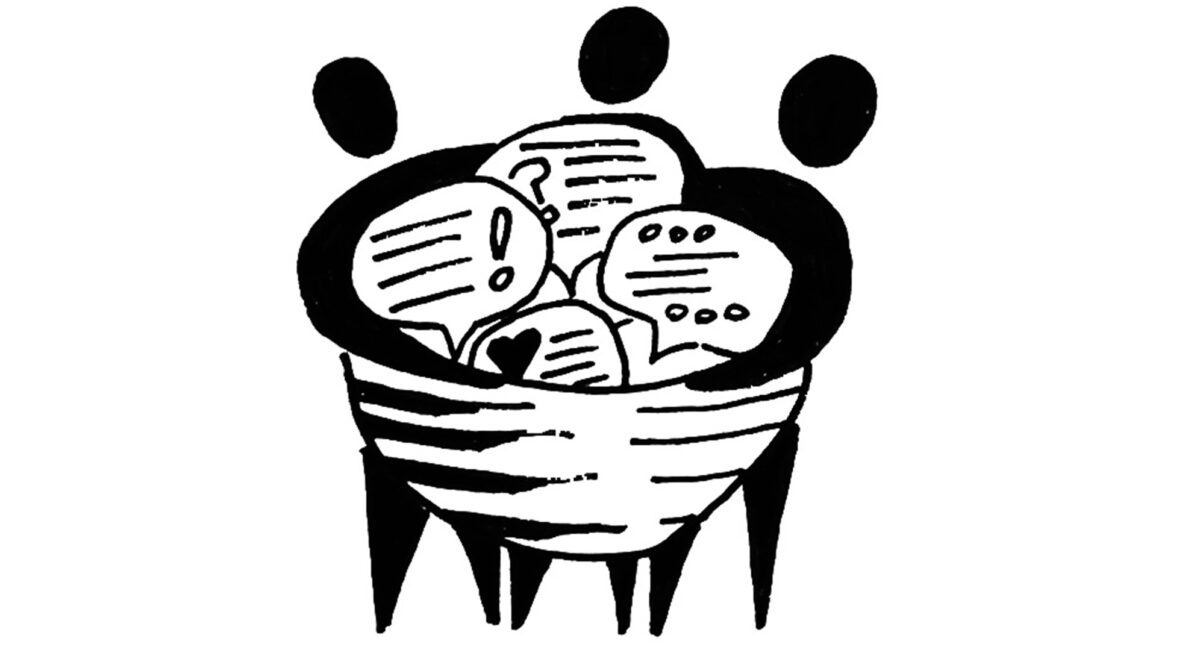Storytelling is one of the most powerful knowledge management tools of the Art of Hosting Community. Collective harvesting enables us to track many arcs of a single story simultaneously, meaning we can practice targeted listening and group learning, while offering a gift to the story holders.
Group harvesting takes time – at least 90 minutes is the minimum time needed. If you are working with a group of harvesters during a training, or with people who have not done this type of process before, keeping the storytelling to around 30 minutes is advisable, otherwise it is easy for listeners to become overloaded.
STEPS:
Prework
- First, check with your storytellers and make an invitation to them. Stories respond to invitation and when a heartfelt invitation is present, often a story will come out in a whole new way and offer new learning to those telling it. Key criteria for storytelling are that it should include a breakthrough point or learning, but it does not need to be a success story. A group harvest is a gift to those telling and those harvesting and should be offered as such.
- Next, decide on the arcs you would like to harvest. Ideally, this would be agreed upon with the storytellers and the listeners, depending on where they want to focus their learning. You will need at least one person harvesting each arc you have chosen, and more than one person can harvest the same arc simultaneously. The following are some arc examples:
-
- Narrative Arc: The thread of the story – people, events, stages. You might also harvest facts, emotions, and values that are part of the story.
- Process Arc: What interventions, processes, applications, and/ or discoveries happened?
- Pivotal Points: When did breakthroughs occur, what did we learn?
- Application: What can we learn from this story for application in our own or other systems?
- Taking Change to Scale: What can we learn from this story about expanding systems change across different impact scales?
- Questions: What questions arise from this story that we could ask of any system?
- Synchronicity & Magic: What happened during the story that pointed to synchronicity and magic or spark?
- Specific Theme: Harvest the story using a specific theme, like collaborative leadership, the art of participation, etc., and see what it tells you.
- Art of Hosting Pattern Arc: The 8 Breaths: Where did each breath occur during the story? The 5th organizational paradigm: Where did new forms of governance and working occur? Core team/ calling team: What did we learn about holding the center of this work? There may be others as well.
- Principles: What principles of working can be gleaned from this story? What did we learn about participatory practices? What principles of complex living systems were reflected in this work?
- The Story Field: How did the field of the system’s story change? Can you name the story or metaphor the system started with and what it moved to?
- Sketch out or prepare a draft layout of a framework to harvest within during the storytelling.
For Activity
Framing & Introduction (15 – 20 minutes)
Welcome people to the session. Make the invitation publically to the storytellers. Explain the arcs and ask for volunteers.
Storytelling (30 minutes)
Ask the storytellers to tell the story and the group to harvest. Be clear about the time allocated for the storytelling.
Collective Harvest (30 minutes – 2 hours)
Give the storytellers materials to do their harvest of the harvest. Ask each of the harvesters to report in on what they found. Take at least as long for this as for the storytelling. Each of the harvesters will have more depth than can be told during the first round. It might be helpful to have more than one round of harvest, or for the rest of the group to question each harvester to draw out additional insights.
Response from the Group
What are the gifts to you from this group harvest? What are you taking away from this session?
Closing the Session
Thank the storytellers and the harvesters. Open up the room to any final remarks about what will happen to the harvest now that it has been heard. Is there enough here to return to it again and see what else surfaces? Do participants want to come back as a group and hear the next version of the story?
CONSIDERATIONS:
- If you have other talents in your group around graphic facilitation/ visuals, poetry, music, cognitive mapping, art, etc., you may also want to invite a harvest in this form. Each of these will add greater richness, diversity, and enjoyment to the harvest.
- Application for collective story harvesting include systemic story harvesting for applied learning, full system team building/ strategy sessions, divergent/ convergent storytelling, and creating a new field of work or practice.
REFERENCES:
- (2023). Leading Courageously in Higher Education: The Art of Hosting and Harvesting Conversations that Matter. Seattle, Washington. Daniel J. Evans School of Public Policy & Governance.


